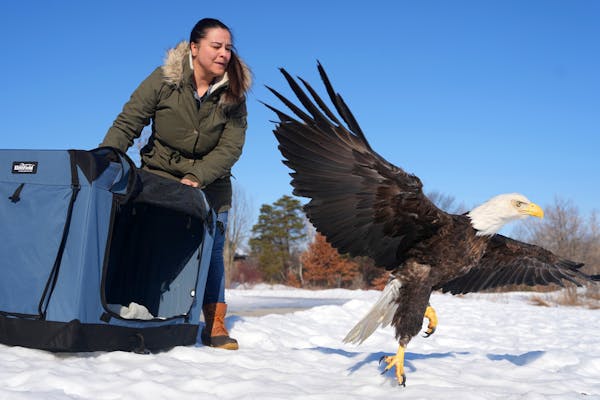Minnesota will restrict strangulation snares and other traps in the northeastern part of the state to settle a federal lawsuit over Canada lynx dying in traps set for other animals.
The changes are the core of a settlement between the Center for Biological Diversity and the state Department of Natural Resources (DNR) that was finalized Tuesday in an order from U.S. District Court Judge Eric C. Tostrud. The two sides reached the compromise last year, but it was delayed when trapping groups intervened to contest it.
Canada lynx are listed as threatened under the U.S. Endangered Species Act, and the Center for Biological Diversity sued the DNR in 2020, alleging it was violating the act by authorizing trapping practices that endanger lynx. Even the accidental deaths are an illegal take under the act, the group argued.
The state has banned hunting or trapping lynx since 1984, but at least nine are known to have been caught in traps since 2008.
The DNR has 40 days to publish a rule imposing the new restrictions. The wire or cable snare traps that loop around the animal's neck must be modified so they cannot close tighter than 3 1/4 inches. That's the size that can allow trappers to catch coyotes and bobcats, typically for their fur, but is large enough for a lynx to survive and be released.
The DNR will also make other changes, including prohibiting the use of snapping jaw leghold traps greater than 6½ inches in diameter, down from the old trap size of 8¾ inches.
The new restrictions apply to traps in the Lynx Management Zone northeast of Hwy. 53 in the Arrowhead region.
Collette Adkins, carnivore conservation director and senior attorney at the Center for Biological Diversity, said her organization would have preferred a ban on all trapping in lynx territory, but considers the settlement a victory for the cat and its fans.
"We're so happy that northeast Minnesota is going to be safe for the Canada lynx," Adkins said.
Dave Olfelt, director of the DNR's fish and wildlife division, called the restrictions "common sense" changes that will make it less likely lynx are injured or killed yet still allow trappers to operate in the lynx zone. The agency will publicize the changes in the hunting and trapping regulation booklets it puts out in late summer each year.
"We print half a million of them a year," Olfelt said.
Gary Leistico, a Clear Lake lawyer representing the trappers, said the changes are unnecessary. The Minnesota Trappers Association, National Trappers Association and Fur Takers of America together contested the settlement because they don't think the trapping restrictions will affect lynx mortality.
Leistico said the groups are disappointed the DNR chose to settle. Accidental lynx deaths from trapping are very rare, he said, and don't affect the animal's ability to thrive in Minnesota. More lynx are hit by cars, he said.
Very few trappers earn a living through the practice, he said, but they can earn extra money. It's a cultural issue, he said, often a family tradition and a "part of who they are."
The reclusive snow cats once covered about half the states in the country, but the fur trade, logging, agriculture and development all altered the landscape and shrank their territory to about eight states. Climate change is expected to further reduce populations as it eats into their deep-snow habitat.
An estimated 100 to 300 Canada lynx roam the state's North Woods. They are specialist predators who dine almost exclusively on snowshoe hare. They don't attack livestock, dogs or other large animals.
The rangy cats resemble bobcats but are larger and have very long hind legs that appear to tilt them forward. Their famously large furry paws act as snowshoes allowing the felines to skim the snow in pursuit of their prey. The Star Tribune recently featured the cats in its "Vanishing North" series about the biodiversity crisis.
